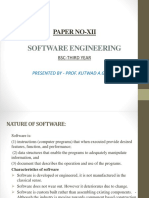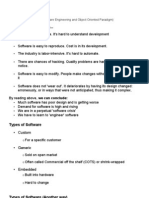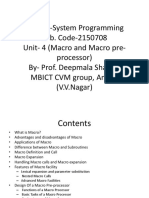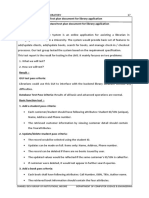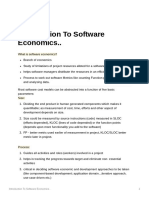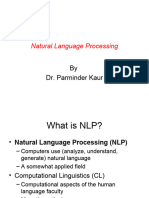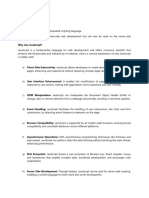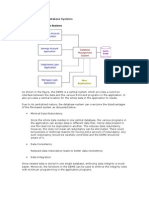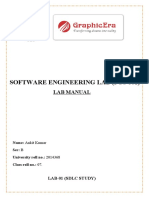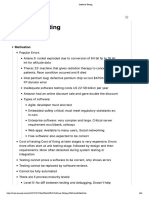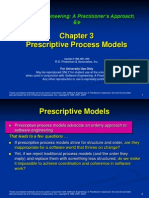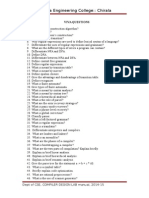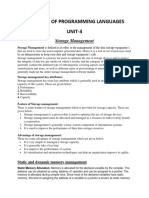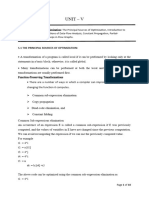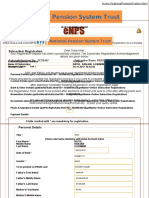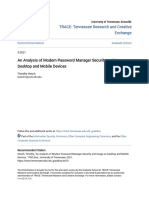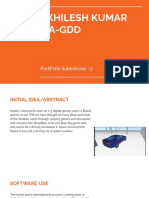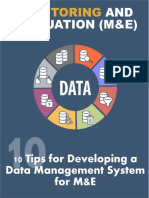0% found this document useful (0 votes)
1K views10 pagesWhat Is Software Economics?
Software economics studies how resources are allocated for software projects to maximize efficiency. It models software costs based on size, process, personnel, environment, and required quality. Process and personnel are especially important as they guide activities and development. Estimation techniques include expert judgment, analogous comparison to past projects, breaking work down into tasks, and mathematical algorithms. Work breakdown structures divide complex projects into smaller, more manageable units to improve planning, scheduling, and risk identification. Software maintenance preserves value over time through correcting faults, improving design, implementing enhancements, and retiring software. It is important for meeting new requirements and using newer technologies.
Uploaded by
Abdul Raheem MemonCopyright
© © All Rights Reserved
We take content rights seriously. If you suspect this is your content, claim it here.
Available Formats
Download as DOCX, PDF, TXT or read online on Scribd
0% found this document useful (0 votes)
1K views10 pagesWhat Is Software Economics?
Software economics studies how resources are allocated for software projects to maximize efficiency. It models software costs based on size, process, personnel, environment, and required quality. Process and personnel are especially important as they guide activities and development. Estimation techniques include expert judgment, analogous comparison to past projects, breaking work down into tasks, and mathematical algorithms. Work breakdown structures divide complex projects into smaller, more manageable units to improve planning, scheduling, and risk identification. Software maintenance preserves value over time through correcting faults, improving design, implementing enhancements, and retiring software. It is important for meeting new requirements and using newer technologies.
Uploaded by
Abdul Raheem MemonCopyright
© © All Rights Reserved
We take content rights seriously. If you suspect this is your content, claim it here.
Available Formats
Download as DOCX, PDF, TXT or read online on Scribd
/ 10
